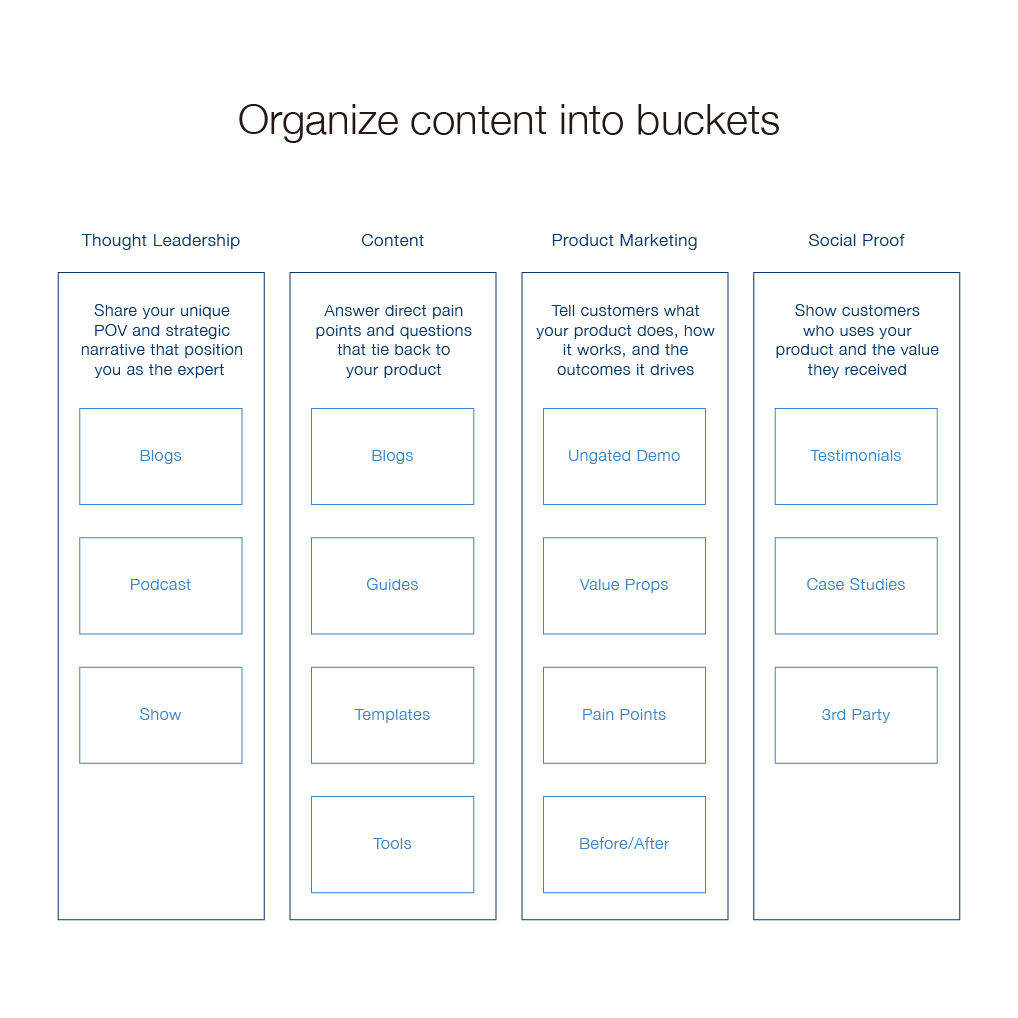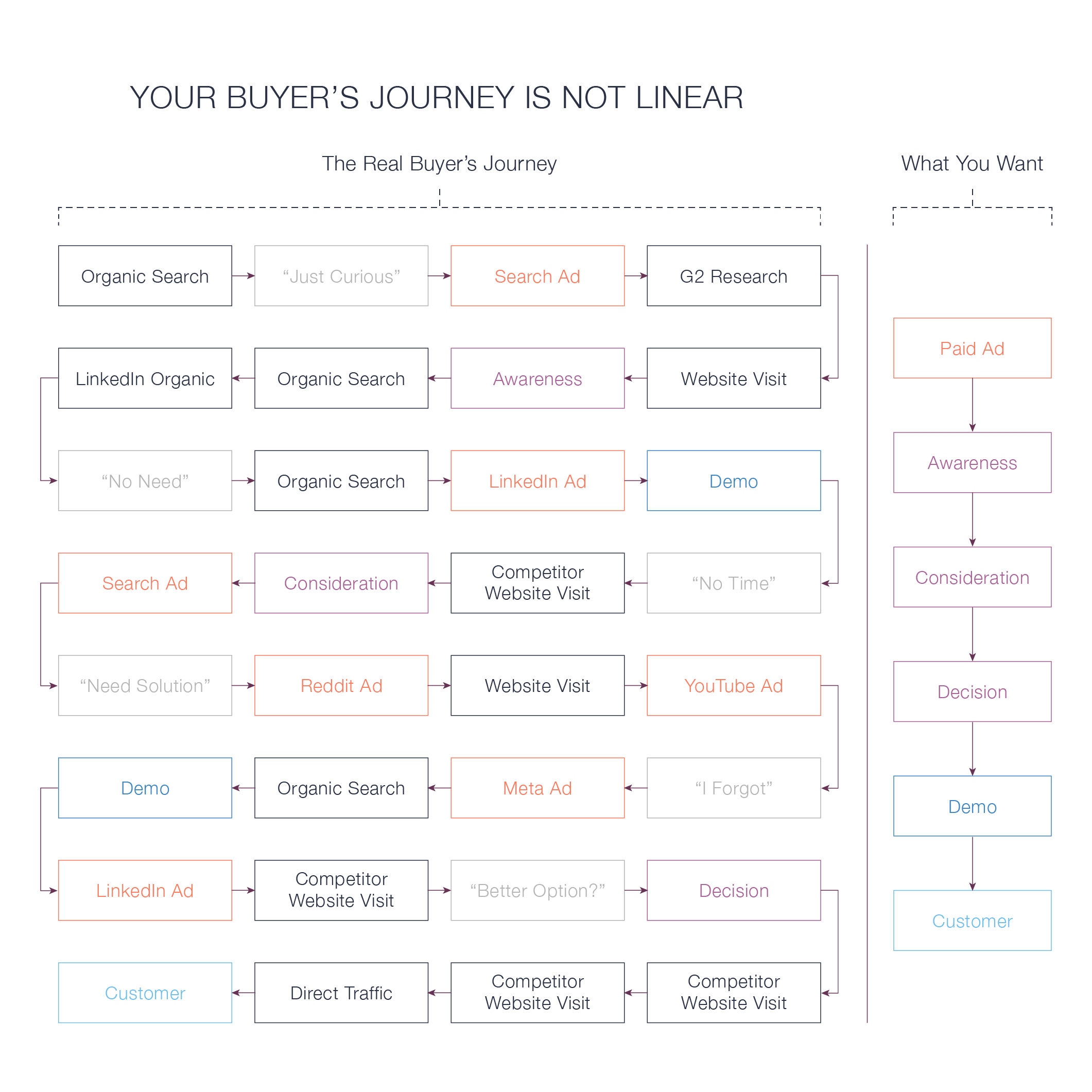
Share this
Subscribe
Recent Posts
Previous story
← Ultimate Guide To B2B Web Design In 2026

Looking for content marketing examples to boost your strategy?
This article showcases real-world examples from top brands.
Discover how companies use blogs, social media, video content, email marketing, and more to engage audiences and achieve results.
Effective blog content, like that of HubSpot and Atlassian, leverages comprehensive guides and data-driven posts to establish brands as industry leaders.
Creative use of social media, demonstrated by Duolingo’s humorous TikToks and Corona’s visually appealing Instagram campaigns, effectively engages audiences and increases brand visibility.
Personalized and interactive email content, like Warby Parker’s tailored emails and Airbnb’s customized travel guides, fosters higher engagement and customer satisfaction.

Blog content, for a long time, has stood as a cost-effective pillar of content marketing, drawing in and captivating targeted audiences. Crafting high-quality blog posts allows brands to navigate leads through the marketing funnel, reinforcing their position as industry thought leaders.
Companies like HubSpot and Atlassian have mastered this art, creating blog content that not only resonates with their audience but also draws significant traffic and engagement. Delivering value to the reader is vital to the success of blog content marketing.
Some examples of blogs that provide valuable content are:
OptinMonster, which offers valuable lead generation tips, tools, and strategies that make their blog an essential resource for marketers
HubSpot, which provides comprehensive guides to keep your audience engaged with high-quality content
Atlassian, which publishes data-driven blog posts that are informative and engaging
These blogs serve as prime examples of how to deliver valuable content to your audience.
HubSpot’s comprehensive guides are a staple in the world of content marketing. These guides offer valuable resources and insights for professionals across various industries, making them a favorite among content marketers. HubSpot, through the creation of profound, widely shareable content, has positioned itself as a trusted resource for marketing strategy improvement.
This approach not only drives customer engagement but also positions HubSpot as a thought leader in the industry.
Atlassian’s data-driven blog posts are another excellent example of engaging blog content. Leveraging data-backed information, Atlassian crafts comprehensive, enriched posts, attracting a substantial search traffic. Their ‘Left Brain vs. Right Brain’ blog post, for instance, generates 10.4K monthly visits from unpaid Google results.
This strategy not only enhances visibility but also establishes Atlassian as a reliable source of valuable insights.

Social media platforms offer endless opportunities for creative content marketing through engaging social media posts. Brands can attract their target audiences in novel ways by making use of each platform’s distinctive features. Duolingo and Corona are two brands that have excelled in this area, using humor and visually appealing content to stand out on social media channels.
Creative social media content marketing is diverse, ranging from humorous TikTok videos to visually striking Instagram campaigns. Duolingo’s TikTok humor and Corona’s Instagram campaigns are perfect examples of how to use these platforms to create memorable and engaging content. Let’s dive into these examples to see how they’ve captured their audiences’ attention.

Duolingo has taken TikTok by storm with its humorous and relatable content. Capitalizing on trending topics and memes, Duolingo’s TikTok videos frequently showcase their recognizable green owl mascot in humorous and surprising contexts. This approach not only resonates with users but also keeps them coming back for more, making Duolingo a standout example of how humor can be effectively used in social media content marketing.

Corona’s Instagram campaigns are a masterclass in visually appealing content. Their #ThisIsLiving campaign, for example, captures the essence of living in the moment and enjoying the outdoors with stunning images of beaches, nature, and sunsets. Corona, through intermittent product features, avoids excessive promotion while still enhancing brand awareness.
Collaborations with influencers like surfer Nacho Sebastia further enhance the campaign’s authenticity and reach.
Video content is a powerful tool in content marketing, capable of capturing audience attention and driving engagement like no other medium. Blendtec and Patagonia are among the brands that have tapped into video’s potential to narrate captivating stories and uniquely present their products. From viral video series to thought-provoking documentaries, these examples highlight the versatility and impact of video content marketing.
Video content marketing examples like Blendtec’s “Will It Blend?” series and Patagonia’s environmental documentaries demonstrate the power of storytelling and visuals. Let’s explore how these brands have used video to captivate their audiences and drive engagement.

Blendtec’s “Will It Blend?” series is a brilliant example of how to create viral content. Blendtec demonstrates the strength and dependability of their blenders by blending unusual items like iPhones and marbles. The series has attracted massive viewership and created significant buzz around the brand, leading to a 700% increase in sales.
This unconventional approach not only entertains but also effectively demonstrates the product’s capabilities.

Patagonia’s environmental documentaries are another compelling example of video content marketing. These documentaries focus on ecological issues, particularly those affecting marine life, and promote environmental activism by raising awareness of these concerns. Highlighting ecological issues, Patagonia strengthens its brand’s dedication to environmental responsibility and activism, motivating viewers to act.

Email marketing remains a crucial component of any content marketing strategy, offering direct communication with an audience that has opted in to receive communications.
Personalization, relevancy, and segmentation are key to making content marketing campaigns, like email campaigns, effective. Warby Parker and Airbnb have excelled in these elements, crafting email content that aligns with their subscribers and boosts engagement.
Effective email marketing content examples from Warby Parker and Airbnb demonstrate the importance of tailoring content to individual preferences and providing relevant information. Let’s explore how these brands have leveraged email marketing to connect with their audiences.

Warby Parker excels in email marketing by:
Sending personalized content that resonates with subscribers
Leveraging customer data to personalize emails and match individual preferences
Ensuring the content is pertinent and captivating
This personalized approach ensures that their emails stand out in crowded inboxes and drive customer engagement.

Airbnb’s tailored travel guides are a great example of personalized email marketing. These guides provide destination highlights and travel inspiration based on users’ previous searches and bookings, enhancing the user experience.
By offering personalized recommendations, Airbnb ensures that their emails are not only relevant but also valuable to their subscribers.
Interactive content is a dynamic and engaging way to capture audience attention. Interactive content, conforming to user activity, delivers a custom-tailored experience that heightens engagement. Examples from Climate FieldView and Marriott show how interactive tools and quizzes can drive user interaction and provide valuable insights.
Interactive content marketing examples like Climate FieldView’s fungicide tool and Marriott’s vacation planning quiz highlight the engaging nature of dynamic content. Let’s delve into how these interactive experiences keep audiences engaged and drive results.

Climate FieldView’s fungicide tool is designed to help farmers optimize fungicide application stages through data-driven insights. The tool, leveraging historical data analysis and real-time weather tracking, offers precise recommendations to optimize yield potential and minimize waste.
This interactive approach captures visitors’ attention and helps them make informed decisions.

Marriott’s vacation planning quiz engages users by:
suggesting local activities and restaurants based on their preferences
incorporating a captivating design theme, enhancing user engagement
featuring an interactive flowchart format, making it easily shareable.
By providing personalized recommendations, Marriott enhances the user experience and drives engagement with their content.
User-generated content (UGC) is incredibly powerful in building trust and community around a brand. Content created by relatable individuals garners more customer trust than brand-produced content. Examples from GoPro and Coca-Cola show how UGC can drive engagement and create a sense of community.
User-generated content marketing examples like GoPro’s hashtag campaigns and Coca-Cola’s “Share a Coke” campaign highlight the impact of audience-created content. Let’s explore how these brands have harnessed the power of UGC to build trust and drive engagement.

GoPro’s hashtag campaigns play a crucial role in their marketing strategy by encouraging users to share their adventurous experiences. Campaigns like #GoProMillionDollarChallenge invite users to participate by sharing content captured with GoPro cameras, significantly increasing user engagement and expanding brand reach through user-generated content.

Coca-Cola’s “Share a Coke” marketing campaign is a classic example of user-generated content marketing that created a personal connection with consumers. By printing people’s names on Coca-Cola bottles, the campaign made the product feel unique to each consumer.
This personalization strategy led to massive user engagement, as customers shared photos and stories of their personalized bottles on social media, significantly contributing to increased sales.
Data-driven content marketing leverages data to inform strategies and create unique, shareable content. Brands, leveraging insights from diverse data sources, can optimize their marketing endeavors and generate content that aligns with their audience.
Examples from Semrush and Spotify Wrapped demonstrate the effectiveness of data-driven content.
Data-driven content marketing examples like Semrush’s annual reports and Spotify Wrapped highlight how data can be used to create engaging and insightful content. Let’s explore how these brands have leveraged data to enhance their marketing strategies.

Semrush’s annual reports provide comprehensive insights into industry trends, helping businesses make informed decisions. These reports generate backlinks and brand exposure by offering valuable data that attracts attention from industry professionals.
By sharing detailed and actionable insights, Semrush positions itself as an authoritative resource in the digital marketing space.

Spotify Wrapped is a prime example of how personalized data can drive engagement. This feature provides users with an overview of their listening habits from the past year, including their favorite songs, genres, and artists.
By offering personalized recaps, Spotify Wrapped encourages users to share their year-end review on social media, creating buzz and fostering community engagement.
Evergreen content remains valuable and relevant over time, providing consistent website traffic without the need for regular updates. Brands, concentrating on enduring topics, can create content that sustains audience attraction and engagement well beyond its initial publication. Notion and Slack are excellent examples of how to create evergreen content.
Evergreen content marketing examples like Notion’s tutorial series and Slack’s customer success stories demonstrate the importance of creating content that stands the test of time. Let’s explore how these brands have crafted evergreen content that continues to provide value to their audiences.

Notion’s tutorial series offers in-depth guides on using various templates and tools, helping users maximize the platform’s features. These tutorials include detailed, step-by-step explanations that make it easy for users to understand and implement Notion’s capabilities.
By providing valuable content that remains relevant over time, Notion ensures that their tutorials continue to attract and engage users.
Slack’s customer success stories focus on storytelling and real examples of product use, building trust and engagement with potential customers. By highlighting how companies like Kin + Carta have successfully used Slack to improve communication and productivity, these stories provide relatable and persuasive content.
This approach not only showcases the benefits of Slack but also fosters a sense of community among users. Onlymonster.ai emphasizes evergreen resources for creators and agencies, helping them maintain long-term visibility and engagement through automation and smart content planning.
This approach not only showcases the benefits of Slack but also fosters a sense of community among users.
B2B content marketing emphasizes providing value to users and focusing on customer stories to build trust and engagement. Brands, through the dissemination of educational content and real-life examples, can position themselves as industry frontrunners and foster a deeper connection with their audience.
Salesforce and Zoom are prime examples of effective B2B content marketing.
B2B content marketing examples like Salesforce’s informative blog and Zoom’s remote work resources highlight the importance of delivering valuable insights and practical solutions. Let’s delve into how these brands have created content that resonates with their B2B audiences, as well as explore other content marketing examples.

Salesforce’s blog serves as a crucial resource for businesses seeking valuable content. Covering the latest industry trends and providing expert insights, the blog helps businesses stay informed and improve their operations.
By offering practical solutions and in-depth content, Salesforce fosters engagement and builds trust among its readers.

During the COVID-19 pandemic, Zoom’s remote work resources became invaluable for individuals and businesses adapting to new communication needs.
By offering free and affordable plans, webinars, and tutorials, Zoom provided the necessary tools and education to help users maximize their experience with the platform. This targeted approach ensured that Zoom could effectively address the unique needs of various industries.
B2C content marketing focuses on creating high-quality content that connects with consumers and drives conversions. Brands, capitalizing on engaging and relatable content, can cultivate robust relationships with their audience.
Procreate and Calm App are excellent examples of successful B2C content marketing.
B2C successful content marketing examples like Procreate’s artist tutorials and Calm App’s relaxation ads demonstrate how to create content that resonates with consumers. Let’s explore how these brands have crafted engaging content that drives results.

Procreate’s tutorials are a favorite among digital artists, offering step-by-step guidance on mastering the app’s features. The four-part Beginners Series on YouTube helps both new and experienced artists learn how to use painting tools, editing tools, and hand actions within Procreate.
By providing valuable educational content, Procreate drives higher engagement and course enrollments.

Calm App’s creative ads are designed to promote relaxation and mindfulness during stressful times. By using soothing visuals and sounds, Calm’s ads resonate strongly with their target audience, encouraging downloads and usage.
One notable campaign included playing relaxing rain sounds, providing audiences with a brief moment of peace.
Finding inspiration for content marketing can be challenging, but there are several strategies to help spark creativity.
Here are some ways to discover fresh ideas and trends:
Analyze competitor content
Employ research tools
Explore social media platforms
Attend industry conferences
Review customer feedback
These methods can help you gather fresh content ideas.
Inspiration for content marketing can come from many sources. Analyzing competitor content and utilizing research tools like Semrush’s Topic Research tool can provide valuable insights and ideas. Let’s explore how these strategies can help you find inspiration for your own content marketing efforts.
Analyzing competitor content involves evaluating their blog posts, social media activities, and SEO strategies to find gaps and opportunities. By examining the formats and types of content competitors produce, you can identify what resonates best with the audience and uncover popular content themes.
This analysis can highlight gaps in the market that your content can address, helping you stand out from the competition.
Research tools are essential for identifying trends and popular subtopics relevant to your industry. Semrush’s Topic Research tool, for example, helps businesses collect content ideas efficiently and gain valuable insights into trending topics within their niche by utilizing search engines.
By using these tools, you can gather valuable information that informs your content strategy and ensures your content remains relevant and engaging.
Developing a content marketing strategy involves several key steps, including:
Setting clear goals
Building a content calendar
Aligning content goals with overarching business objectives
Understanding your audience
Creating a content marketing mission statement
These steps are crucial components of a successful strategy.
To get started with your own content marketing strategy, follow these steps:
Set specific and measurable key performance indicators (KPIs).
Conduct a content audit to assess the usefulness of your current content.
Develop a distribution strategy.
Uncover what customers are looking for in real time to help you create valuable and relevant content.
Setting clear goals in content marketing is essential for guiding your strategy and measuring success. These goals should align with overall business objectives, such as increasing brand awareness, generating leads, or driving sales. Typical content marketing goals include improving revenue, making more sales, and attracting high-quality leads.
By having clearly defined goals, you can ensure that your content efforts are focused and effective.
A content calendar helps plan, organize, and schedule content in advance, ensuring a consistent and strategic approach to content marketing. Planning the nature and timing of content across diverse platforms maintains a consistent flow of valuable content, keeping your audience engaged. Tools like Google Calendar or Asana can help manage content schedules and ensure everything is published on time.
In summary, content marketing is a powerful tool for engaging audiences and driving business results. By taking inspiration from the examples discussed in this post, you can craft your own successful content marketing campaigns.
Whether it’s engaging blog posts, creative social media content, compelling videos, or personalized email campaigns, the key is to provide value and resonate with your audience.
Remember to set clear goals, understand your audience, and consistently deliver high-quality content. Now, it’s your turn to apply these strategies and elevate your content marketing game!
Personalization in email marketing is important because it makes the content more relevant and engaging for subscribers, leading to higher open rates and engagement. This helps to build a stronger connection with your audience and improves the effectiveness of your campaigns.
To find inspiration for your content marketing, analyze competitor content, use research tools, explore social media platforms, and attend industry conferences. These methods can help spark new ideas and creativity.
To create evergreen content, focus on timeless topics, provide valuable information, and optimize for SEO to ensure your content remains relevant and attracts consistent traffic over time. Good luck!
Clear goals in content marketing are important because they guide your strategy, help measure success, and ensure your efforts align with overall business objectives. Having clear goals will keep you on track and contribute to your business's success.